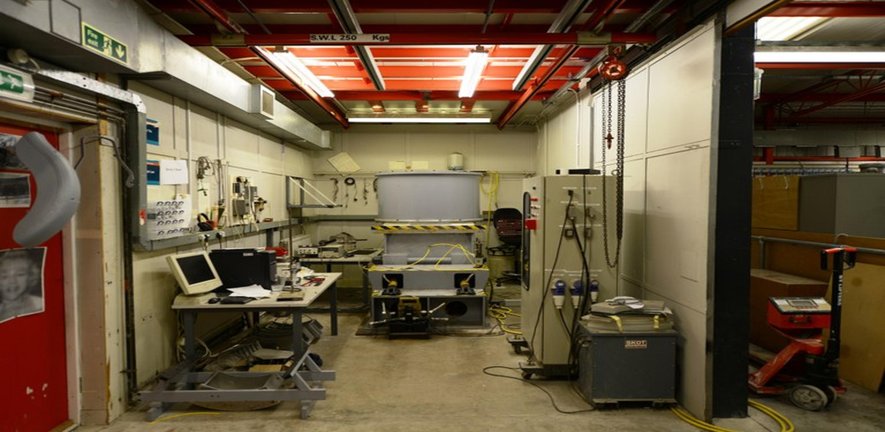A successor to the earlier Cambridge MKI minidrum centrifuge (now at Horoshima University), the MKII minidrum centrifuge was developed in the mid 1990s to provide a relatively inexpensive and quick alternative to conventional larger-scale centrifuge model tests. With a radius of only 370mm, the minidrum centrifuge is ideally suited to teaching applications and the modelling of processes where large quantities of soil are expensive to retrieve (eg. sea-bed pipelines). At a 1/400th scale, a prototype site of dimensions 850x70x50m can be modelled in the ring channel.
A particular feature of the Cambridge drum centrifuges, pioneered by Andrew Schofield, is their twin coaxial shafts - they are, effectively, one centrifuge (the central turntable, carrying actuators or tools) rotating independently of the other (the ring channel, carrying the soil). This makes it possible to keep the soil spinning correctly while the various stages of model preparation and actuator interventions in sequence by stopping and starting the central turntable.
A feature (covered by a patent application) of both the MKI and MKII minidrum centrifuges is the ability to rotate the drum through ninety degrees without stopping the spinning drum. Thus soil and water can be added into the channel with the axis horizontal and subsequent model testing carried out with the axis vertical to eliminate the +/-1g variation in accelerations (Barker, 1998).

